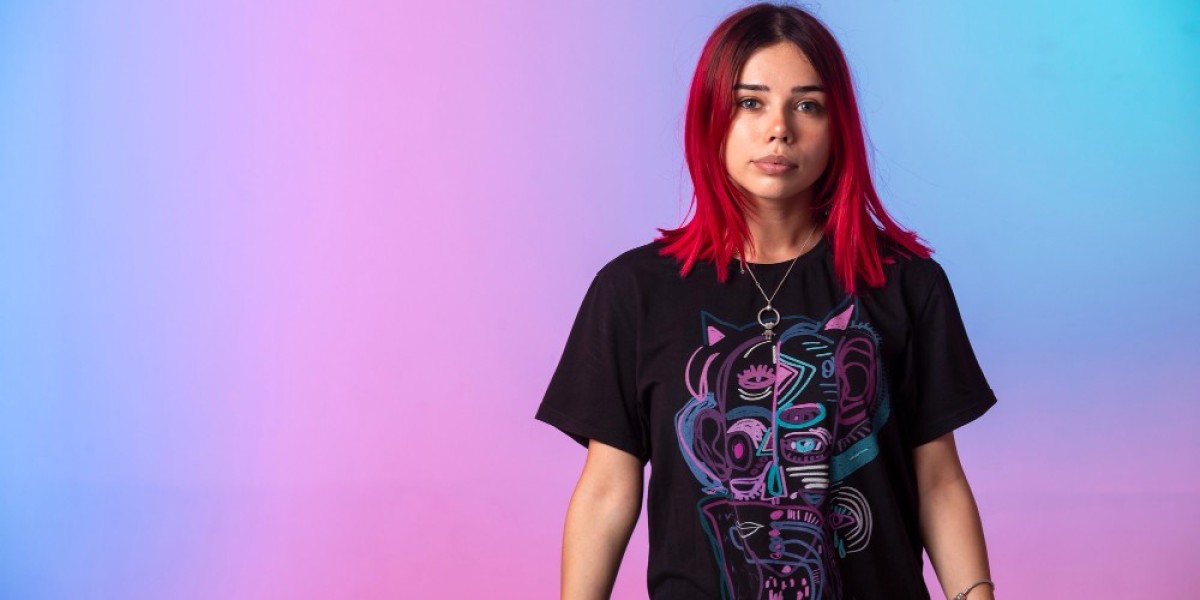Understanding fabric compatibility is crucial for achieving professional results with DTF transfers. While Direct-to-Film printing offers remarkable versatility compared to traditional printing methods, choosing the right fabric can make the difference between a good transfer and an exceptional one. DTF Center has extensive experience working with various fabric types, and this comprehensive guide will help you make informed decisions for your custom apparel projects.
Understanding DTF Transfer technology and fabric interaction
DTF transfers work by printing designs onto a special film, which is then transferred to fabric using heat and pressure. This process creates a mechanical bond between the transfer and fabric fibers, making fabric selection critical for optimal adhesion, durability, and appearance. DTF Center has tested countless fabric combinations to identify the materials that consistently deliver superior results.
The key to successful DTF transfers lies in understanding how different fabric compositions, weaves, and treatments interact with the transfer adhesive. Unlike direct-to-garment printing, which penetrates fabric fibers, DTF creates a layer on top of the fabric, making surface characteristics particularly important for long-term durability and appearance.
Cotton: The gold standard for DTF Transfers
Cotton remains the most popular choice for DTF transfers, and for good reason. Its natural fiber structure provides excellent adhesion properties while maintaining breathability and comfort that customers expect from quality apparel.
100% Cotton Performance: Pure cotton fabrics offer optimal results with DTF transfers. The natural fibers create strong mechanical bonds with transfer adhesives, resulting in excellent wash durability and vibrant color reproduction. DTF Center consistently achieves outstanding results on 100% cotton garments, with transfers maintaining their appearance through 50+ wash cycles when properly applied.
Cotton Weight Considerations: Medium-weight cotton (5.3-6.1 oz) provides the ideal balance of durability and comfort for most DTF transfers. Lighter weights may show transfer edges more prominently, while heavier weights require adjusted temperature and pressure settings for optimal adhesion.
Pre-shrunk Cotton Advantages: Always choose pre-shrunk cotton when possible. DTF Center recommends pre-shrunk fabrics because they minimize dimensional changes during washing, which can stress the transfer and lead to premature failure.
Cotton Blends: Versatility with considerations
Cotton blends offer unique advantages for certain applications, though they require careful consideration of the secondary fiber content when planning DTF transfers.
Cotton/Polyester Blends (50/50 to 80/20): These popular blends combine cotton's natural feel with polyester's durability and moisture-wicking properties. DTF transfers adhere well to most cotton/polyester blends, though optimal temperature settings may vary slightly from pure cotton. DTF Center has developed specific application guidelines for different blend ratios to ensure consistent results.
Tri-Blend Fabrics: Cotton/polyester/rayon tri-blends create exceptionally soft, comfortable garments that work well with DTF transfers. The rayon component adds drape and softness, while maintaining good transfer adhesion. However, these fabrics may require lower application temperatures to prevent rayon damage.
Cotton/Spandex Blends: Small amounts of spandex (2-5%) enhance fabric stretch and recovery without significantly impacting DTF transfer performance. DTF Center recommends these blends for fitted garments where stretch is important, such as women's tees and activewear.
Polyester: High performance applications
Pure polyester and polyester-dominant blends offer unique advantages for specific applications, particularly in performance and technical apparel markets.
100% Polyester Benefits: Polyester provides excellent color vibrancy with DTF transfers, particularly for athletic and performance apparel. The synthetic fibers create strong bonds with transfer adhesives, resulting in exceptional durability. DTF Center frequently uses polyester for sports team uniforms and activewear where moisture management and durability are priorities.
Moisture-Wicking Polyester: Technical polyester fabrics with moisture-wicking treatments work exceptionally well with DTF transfers. The smooth fiber surface promotes excellent adhesion, while the technical properties remain largely unaffected by the transfer application process.
Sublimation-Compatible Polyester: When working with polyester, consider whether the fabric is intended for sublimation printing. DTF transfers work on these fabrics, but the coating designed for sublimation may affect adhesion characteristics.
Specialty fabrics and advanced applications
DTF Center's expertise extends beyond basic cotton and polyester to include specialty fabrics that open new market opportunities for custom apparel businesses.
Canvas and Heavy-Weight Fabrics: Duck canvas, denim, and other heavy fabrics work well with DTF transfers when proper application techniques are used. These materials may require increased pressure and slightly longer dwell times to ensure complete adhesion through thicker fabric structures.
Performance Fabrics: Modern athletic fabrics with advanced treatments (antimicrobial, UV protection, cooling) generally accept DTF transfers without compromising their technical properties. DTF Center has successfully applied transfers to high-end performance fabrics used in professional sports and outdoor recreation markets.
Fleece and Sweatshirt Materials: Both cotton and polyester fleece work excellently with DTF transfers. The smooth exterior surface of most fleece fabrics provides ideal conditions for transfer adhesion, while the interior loop pile remains unaffected by the application process.
Fabrics to approach with caution
While DTF transfers offer remarkable versatility, certain fabric types require special consideration or may not be suitable for standard DTF applications.
Heavily Textured Fabrics: Materials with pronounced textures, such as waffle knits or heavily ribbed fabrics, can create uneven transfer adhesion. DTF Center recommends testing these fabrics carefully and potentially using higher pressure applications to ensure complete contact.
Water-Resistant and Coated Fabrics: Fabrics with water-resistant coatings or treatments may not provide adequate adhesion for DTF transfers. The coating can prevent proper bonding between the transfer adhesive and fabric fibers.
Silk and Delicate Natural Fibers: While possible, silk and similar delicate fabrics require significantly reduced temperatures and pressures, which may compromise transfer durability. These applications require extensive testing and may not be suitable for commercial production.
Application techniques for optimal results
Understanding proper application techniques for different fabric types is crucial for maximizing the potential of DTF transfers. DTF Center has developed specific protocols for various fabric categories.
Temperature and Pressure Optimization: Different fabrics require adjusted application parameters. Cotton typically works best at 320-330°F with medium pressure, while polyester may require slightly lower temperatures (300-320°F) to prevent fabric damage.
Dwell Time Considerations: Application time varies with fabric weight and composition. Lightweight fabrics may require only 10-15 seconds, while heavy canvas might need 20-25 seconds for complete adhesion.
Cooling and Peeling Techniques: Proper cooling before removing the carrier film is crucial for all fabric types. DTF Center recommends allowing transfers to cool to room temperature before peeling, regardless of fabric type, to ensure maximum adhesion strength.
Quality control and testing protocols
Professional results require systematic testing and quality control processes. DTF Center employs rigorous testing protocols to ensure optimal results across different fabric types.
Pre-Production Testing: Always test new fabric types with actual DTF transfers before committing to large production runs. This testing should include wash durability tests to ensure long-term performance meets expectations.
Wash Testing Standards: DTF Center recommends standard wash testing protocols that simulate real-world conditions. Transfers should maintain their appearance and adhesion through at least 25 wash cycles for commercial applications.
Documentation and Consistency: Maintain detailed records of successful application parameters for different fabric types. This documentation ensures consistent results and facilitates troubleshooting when issues arise.
Market opportunities with fabric selection
Strategic fabric selection can open new market opportunities and increase profitability for businesses offering DTF transfers.
Premium Fabric Markets: High-quality fabrics justify premium pricing and attract discerning customers willing to pay more for superior products. DTF Center works with numerous clients who have built successful businesses around premium fabric offerings.
Specialized Applications: Technical fabrics open opportunities in specialized markets such as corporate workwear, promotional products for outdoor industries, and performance athletic apparel.
Sustainable Options: Organic cotton and recycled polyester fabrics appeal to environmentally conscious consumers and can command premium pricing while maintaining excellent DTF transfer compatibility.
Future trends in fabric technology
The textile industry continues evolving, with new fabric technologies regularly entering the market. DTF Center stays current with these developments to ensure compatibility with emerging fabric trends.
Smart Fabrics: Textiles incorporating electronic components or advanced treatments require careful evaluation for DTF transfer compatibility. These premium applications often justify extensive testing investments.
Sustainable Innovations: New sustainable fabric technologies, including plant-based synthetics and recycled materials, generally work well with DTF transfers while appealing to environmentally conscious consumers.
Maximizing success through informed fabric selection
The versatility of DTF transfers allows for successful applications on a wide range of fabric types, but understanding the characteristics and requirements of different materials is essential for achieving professional results. DTF Center's extensive experience with various fabric types provides valuable insights that can help businesses maximize their success in the competitive custom apparel market.
By choosing appropriate fabrics for specific applications and following proper application techniques, businesses can leverage the full potential of DTF transfers to create products that exceed customer expectations and build lasting brand loyalty. The investment in understanding fabric compatibility pays dividends through improved customer satisfaction, reduced reprints, and expanded market opportunities.







